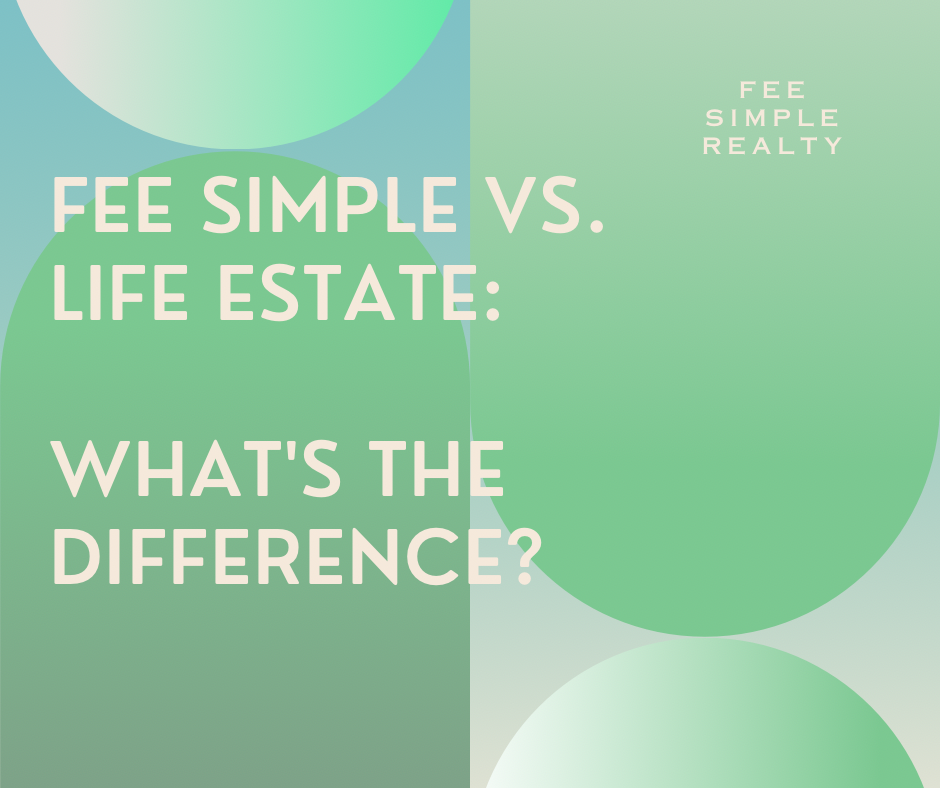Fee Simple vs. Life Estate: What’s the Difference?
When exploring property ownership options, two terms you might encounter are “fee simple” and “life estate.” But what do these terms mean, and how do they differ? Let’s dive into this topic in a way that’s both fun and informative!
Understanding Fee Simple Ownership
First, let’s tackle fee simple ownership. This is the most complete form of property ownership available. When you own a property in fee simple, you have the absolute right to control, use, and transfer the property as you wish. This ownership lasts indefinitely and can be passed down to your heirs. Think of fee simple as owning the property outright, with no expiration date.
The Life Estate Explained
Now, let’s explore life estates. A life estate is a type of property ownership that lasts for the lifetime of a specific individual, known as the life tenant. The life tenant has the right to use and enjoy the property for their lifetime. However, once the life tenant passes away, ownership of the property automatically transfers to another person or entity, known as the remainderman.
Key Differences Between Fee Simple and Life Estate
Understanding the distinctions between fee simple and life estate is crucial. Here are the key differences:
- Duration of Ownership:
- Fee Simple: Ownership is indefinite and can be passed to heirs.
- Life Estate: Ownership lasts only for the lifetime of the life tenant and cannot be inherited.
- Control and Use:
- Fee Simple: Full control over the property, including the right to sell, lease, or modify it.
- Life Estate: Control is limited to the lifetime of the life tenant. The life tenant can use the property but cannot sell or transfer full ownership.
- Transferability:
- Fee Simple: The property can be freely sold, transferred, or bequeathed.
- Life Estate: The life tenant can transfer their interest, but this transfer is limited to their lifetime. The remainderman’s interest remains unchanged.
- Financial Implications:
- Fee Simple: Often involves a higher initial cost with long-term benefits of full ownership.
- Life Estate: May involve lower upfront costs but with the limitation of ownership duration.
Real-World Examples
Consider a scenario where you purchase a home. With fee simple ownership, you have complete control and can pass the property to your heirs. On the other hand, if you hold a life estate, you can live in and use the property for the rest of your life, but upon your passing, the property will transfer to the remainderman.
Which One Is Right for You?
Choosing between fee simple and life estate depends on your long-term goals and financial situation. Fee simple ownership offers stability and the ability to build equity over time. A life estate might be suitable for someone looking to retain property use during their lifetime while planning for a specific remainderman to inherit it.
Conclusion
In summary, understanding the difference between fee simple and life estates is vital in making informed property ownership decisions. Fee simple provides complete and indefinite control, while life estates offer lifetime use with predefined succession. Knowing these distinctions helps you navigate the complexities of real estate ownership.
Other Related Topics
If you found this comparison helpful, you might also be interested in exploring the benefits of joint tenancy vs. tenancy in common or the implications of property deeds in real estate transactions. Did you enjoy our post, fee simple vs. life estate? If so stay tuned for more insightful posts on property ownership!
Contact us today or visit our Instagram | Facebook .
